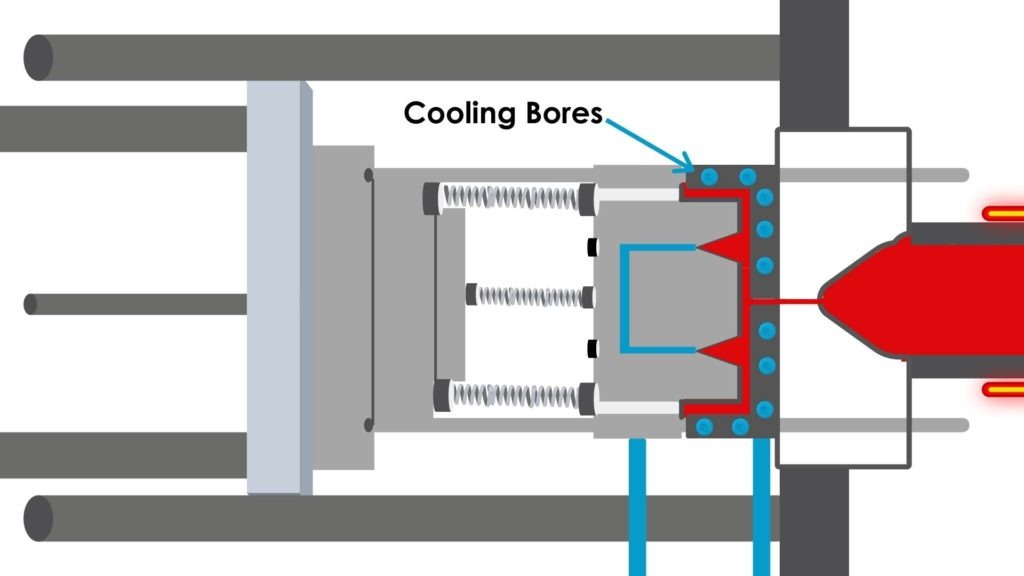A usual way of manufacturing plastic parts is injection molding. It takes a mold that extrudes melted plastic in a specific shape. These forms are constructed using materials such as steel or aluminum, which are strong. However, the question to consider is how long an injection mold lasts.
It depends very much on the material of the mold, part design, volume of production, and cost of maintenance. In this piece, we shall look at each of the factors individually.
What Makes an Injection Mold?
An injection mold is an instrument that is employed during the injection molding process. There are two parts to it:
- The downside (female) hole
- The central (male part)
- The mold is injected with molten plastic. The mold then opens, and the part is ejected after cooling.
Molds have to be accurate, powerful, and capable of reproducing the same image repeatedly over thousands of units. Read more.
The average life expectancy of the molds
The number of mold lives is not unique. However, the average ranges are as follows, according to material and usage:
- Aluminum molds: 5000-10000 cycles
- Pre-hardened steel molds: 100,000 to 500,000 cycles
- Molds made of hardened steel:1,000,000+ cycles
- A cycle = a part made using a single use of a mold.
The most Important Influences on Mold Life
The durability of a mold is dependent on several factors. Here is one by one.
1. Mold Material
This is the most important element.
- Aluminum makes are more affordable and quicker to cast. They, however, wear out faster.
- P20 Steel (pre-hardened steel) is a good medium for production.
- H13 or S7 Steel is the longest-lasting hardened one.
- Purchase steel in case your project will require thousands of its parts.
2. Part Design
The molds may be eroded faster by sharp corners or thin walls on the parts. Complicated designs will gain more movable parts, which enhances wear.
3. Material Used: Plastic
- Certain plastics are abrasive compared to others. The glass fiber or mineral materials may destroy the mold in the long term.
- Glass fiber Nylon is hard on molds.
- Less wear causes soft plastics such as PE or PP.
Custom Plastic Injection Molding Service makes it possible to make an injection mold of one’s priorities.
4. Pressure of injection and temperature
An increase in pressure and temperature accelerates wear to molds. When the process is excessively hard, then steel molds can wear out prematurely as well.
5. Care and Cleaning
- Molds will last longer when frequently cleaned, inspected, and lubricated.
- Have clean vents to prevent the accumulation of pressure.
- Make sure that moving parts are aligned.
- Change broken parts, such as ejector pins.
6. Storage Conditions
At the time of dry storage, the molds should be kept in rooms that are cooled. IR: Moisture may cause rust, as is the case with steel molds.
Mold Life Extension Tips
Select the material to make your mold of (steel is more durable).
- No corners and intricate structures.
- Make use of reduced injection pressures where possible.
- Avoidance of abrasive plastics where not required.
- Clean the mold whenever you use it.
- Apply lubricants on moving components.
- Check wear after each series of cycles.
- Keep store molds in secure, dry areas.
Wear And Tear Indicators Of Your Mold
All around the part edges flashing
- Bad surface finishing
- Mold sticking parts
- Ejection difficulty
- Mold cavity cracks
You should look at these signs and check, and fix the mold.
Is it possible to fix a Mold?
Yes. In a lot of cases, worn areas can be:
- Welded
- Re-polished
- New inserts were brought to replace it.
The process is referred to as mold refurbishment and can give it thousands of incremental cycles.
High / Low Volume Molding
Even a short-life mold will be sufficient in case your project has a requirement of 1,000 parts only. But when millions of parts over long years are required, buy a hardened steel mold and take care of it properly.
Conclusion
Then, what is the life span of an injection mold? It depends. Aluminum molds can service only a couple of thousand parts. The hardened steel molds have even passed a million cycles.
- To get the best out of your mold:
- Choose the appropriate materials.
- Design wisely
- Maintain regularly
If you plan properly, get good care, your mold can help forward for years, and possibly thousands–perhaps even millions–of parts.


